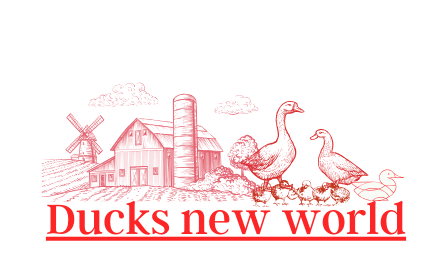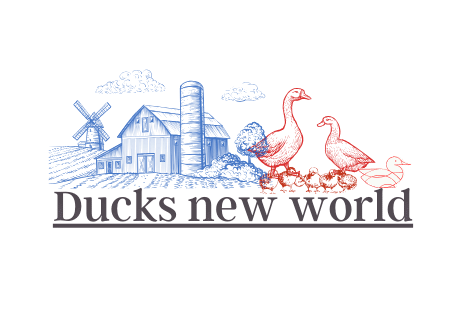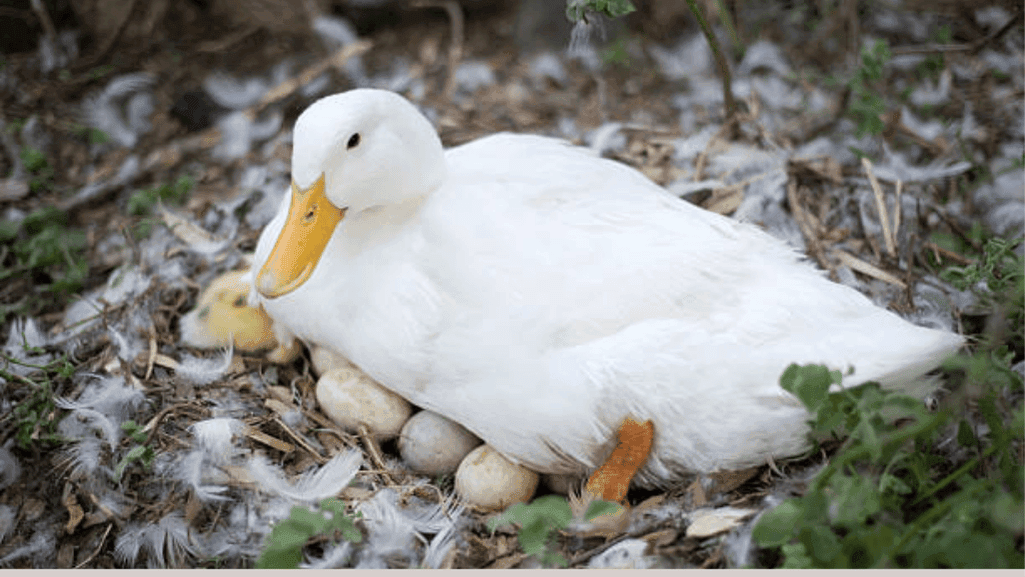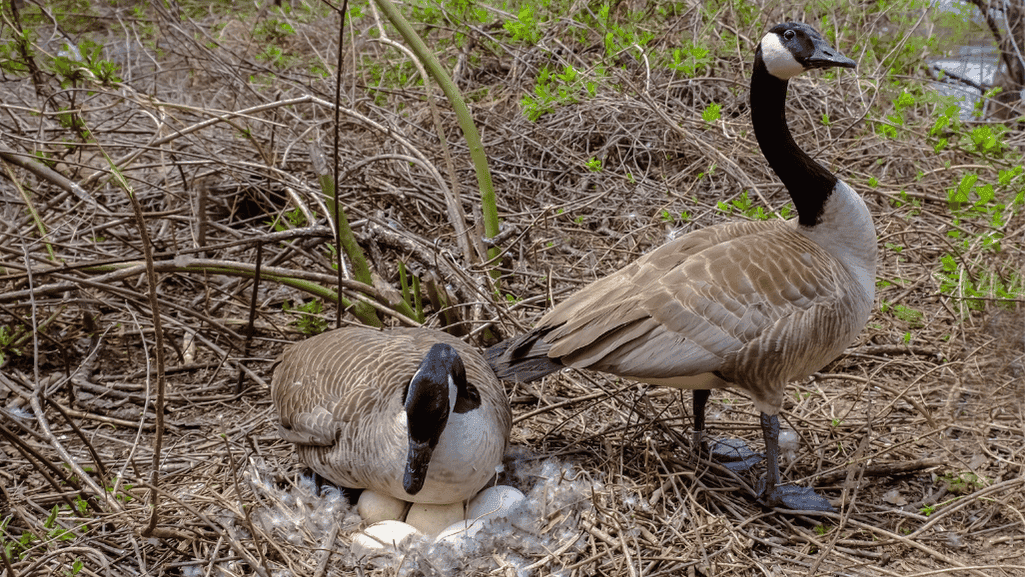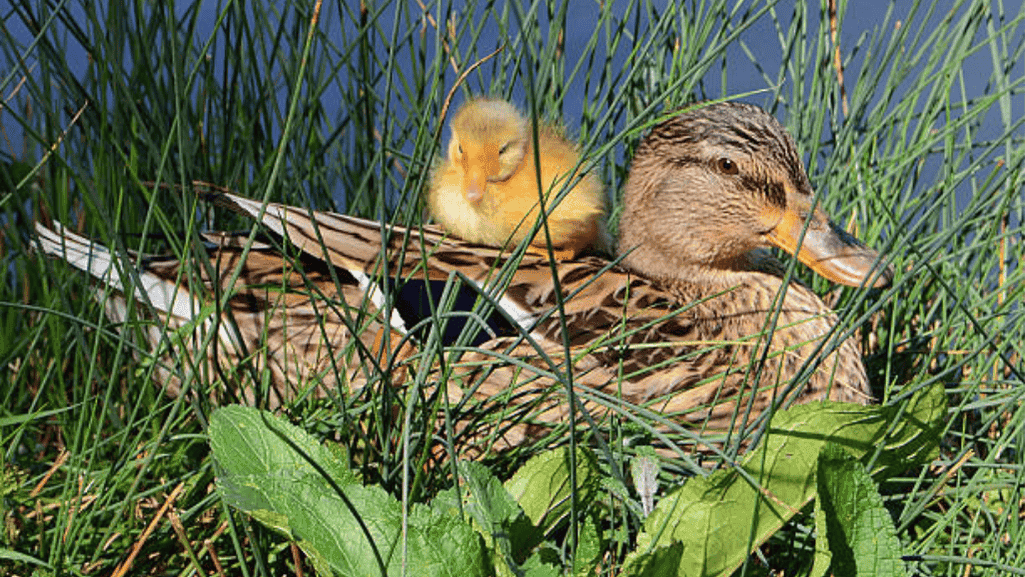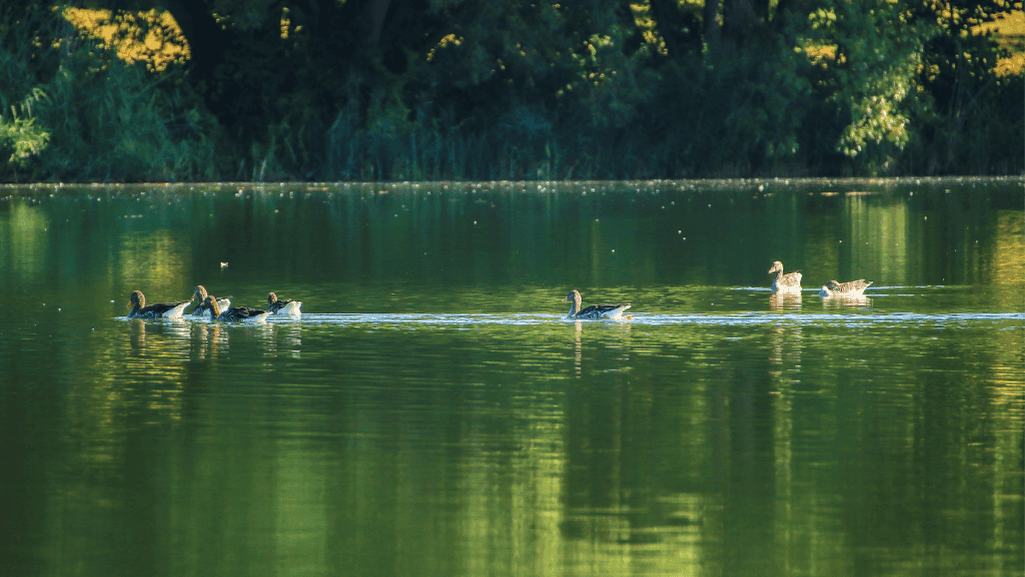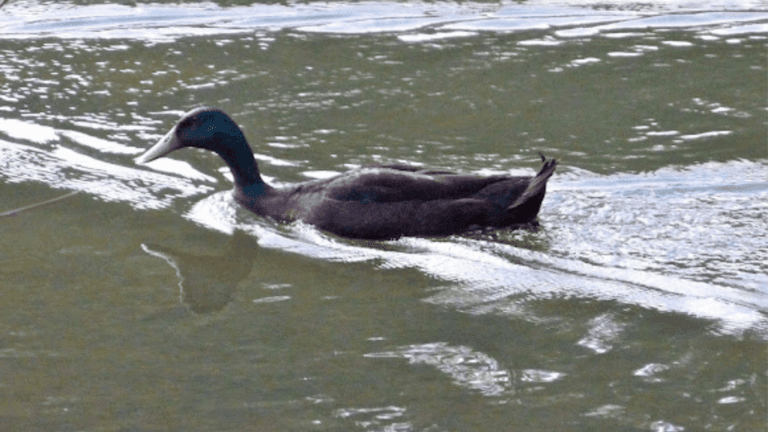Get ready to be amazed by the magical world of duck nests. These incredible homes are where waterfowl breed, keeping their eggs and ducklings safe. With their detailed designs, duck nests show off the amazing skills of these birds.
Ducks pick their nesting materials carefully. They use soft grasses, strong twigs, and fluffy feathers to keep their nests warm and safe. Watching a female duck build her nest is truly a wonder.
Duck nests are more than just homes. They help keep wetlands healthy, supporting many different species. From tiny insects to big birds, many animals depend on ducks and their homes.
Key Takeaways:
- Duck nests are intricately designed structures that provide a safe environment for waterfowl breeding and egg incubation.
- Ducks utilize a variety of nesting materials, including grasses, twigs, and down feathers, to create optimal insulation and protection.
- The construction of duck nests showcases the remarkable adaptations and skills of female ducks.
- Duck nests play a vital role in wetland conservation, supporting biodiversity and the delicate balance of ecosystems.
- The presence of thriving duck populations and their nesting habitats is essential for the well-being of numerous species within the ecosystem.
Exploring the Fascinating World of Duck Nests
Step into the captivating realm of duck nests, where nature’s ingenuity and adaptability are on full display. From the tree-cavity dwellings of wood ducks to the ground-level hideaways of mallards, the diversity of duck nesting behavior is truly awe-inspiring. Each species has evolved unique strategies to ensure the success of their offspring, showcasing the marvels of avian reproductive behavior.
The Diversity of Duck Nesting Habits
Ducks nest in many ways, from trees to the ground. The common eider, the largest duck in the northern hemisphere, nests in coastal areas. On the other hand, the green-winged teal, one of the smallest ducks, nests in inland wetlands.
The nesting season for ducks is from April to May. Mallards, for example, defend a territory around 200 yards from their nesting sites from April to mid-May.
Interestingly, several waterfowl species, including redheads, canvasbacks, and wood ducks, practice nest parasitism. They lay their eggs in the nests of other ducks. This behavior adds another layer of complexity to the already fascinating world of duck nesting behavior.
Adaptations for Successful Nesting
Ducks have evolved many adaptations for successful nesting. Female ducks, such as wood ducks, must eat a lot of invertebrates to produce an egg. This shows how important healthy wetland habitats are.
Ducks also have incredible feather control. Some species have up to 12,000 separate skin muscles for this. This allows them to keep their feathers insulated and waterproof, crucial for both adults and eggs. Female ducks also line their nests with downy feathers, creating a cozy environment for their offspring.
The remarkable adaptations of ducks, from their diverse nesting habits to their specialized feather control, showcase the incredible ways in which these birds have evolved to thrive in their wetland habitats.
To learn more about the fascinating world of ducks, visit Ducks New World. Discover the beauty and complexity of these amazing creatures. By understanding the intricacies of duck nesting behavior and the adaptations that support successful brood rearing, we can better appreciate and protect these marvels of the avian world.
The Anatomy of a Duck Nest
A duck’s nest is a wonder of nature, built to keep eggs and ducklings safe and warm. Each nest is unique, but they all have key parts that help the young grow. From the materials used to the soft lining, every part is important.
The nest starts with a shallow spot in the ground or a tree hole. Ducks pick these spots for their safety and closeness to water. They use their bills to gather grass, leaves, and twigs to build a strong base. This base keeps the eggs warm and safe from the outside world.
The inside of a duck nest is lined with feathers. The mother duck plucks her own feathers to make this soft layer. These feathers keep the eggs warm and control the nest’s humidity. It shows how much the mother duck cares for her babies.
Some ducks, like mallards, build their nests on the ground. Others, like wood ducks, use tree cavities or nest boxes. These places protect them from predators and keep the eggs and ducklings safe.
The Wood Duck is the only North American duck species that regularly produces two broods in one year, showcasing a remarkable breeding behavior.
Nest boxes are key for many duck species. They look like natural tree holes and give ducks a safe place to nest. This helps more ducks survive and grow, especially in areas where natural nesting spots are rare.
Duck nests are amazing examples of nature’s creativity and the amazing ways ducks adapt. Every part of the nest is crucial for the ducklings’ success. By learning about duck nests, we can help protect these special places and the ducks that live there.
Duck Nests: A Crucial Part of the Ecosystem
Duck nests are more than just homes for ducklings. They are key to healthy wetland ecosystems. These nests are safe spots for many waterfowl to lay eggs and raise their young. A healthy duck population shows a wetland is doing well.
The Role of Duck Nests in Wetland Conservation
Duck nests are important for wetland conservation. By watching how well these nests do, scientists can tell how healthy the ecosystem is. Things like predators, habitat changes, and climate shifts can hurt duck nests a lot.
Ground-nesting ducks face big dangers from animals like raccoons and skunks. These threats are a big reason why many nests fail.
To keep duck populations strong, we need to protect their homes. This means managing water levels, fighting invasive species, and keeping nesting sites safe. By doing this, we help not just ducks but many other species that live in wetlands.
How Duck Nests Support Biodiversity
Duck nests show a wetland is full of life. Ducks help many other animals by controlling insects, spreading seeds, and being food for others. This keeps the ecosystem balanced.
Different ducks nest in different ways, adding to the wetland’s variety. Some ducks, like mallards, nest almost anywhere, while others, like canvasbacks, need water. This variety creates a rich mix of habitats for many species.
The Impact of Duck Nests on Local Ecosystems
Duck nests do more than just support ducks. They help the ecosystem by adding nutrients as they break down. Ducks and their babies also affect other animals, creating a complex web of life.
Duck nests are important for more than just the wetland. Many ducks migrate long distances, needing wetlands for rest and food. Healthy duck populations in each wetland help these amazing journeys. They ensure the survival of waterfowl for years to come.
Threats to Duck Nests and Conservation Efforts
Duck nests face many dangers that threaten their survival. These dangers come from humans and natural predators. Saving duck habitats and wetlands is key to protecting these amazing birds.
Human-Induced Threats to Duck Nesting Habitats
One big problem for ducks is the loss of their homes. The U.S. has lost over half of its wetlands and 70 percent of its grasslands. These places are crucial for duck breeding.
Agriculture, like turning prairies into cropland, has made it hard for ducks to find places to nest. The Prairie Pothole Region, for example, sees 10 million waterfowl migrate to breed each year.
Humans also harm duck habitats through wetland drainage, urban growth, and pollution. These actions destroy habitats and disrupt ecosystems. They affect ducks’ food and shelter needs.
Natural Predators and Their Impact on Duck Nests
Natural predators like foxes and raccoons also threaten duck nests. They eat eggs and ducklings. Climate change might make this problem worse by changing predator numbers and behavior.
Climate change can also mess up ducks’ migration and nesting times. This can lead to ducks not finding enough food when they hatch. This is bad for young ducks’ survival.
Conservation Initiatives to Protect Duck Nests
Many groups and agencies are working to save duck nests. They focus on protecting habitats and reducing human impact. Their efforts include:
- Wetland preservation and restoration in key areas like the Prairie Pothole Region.
- Nest box programs for cavity-nesting ducks to replace lost natural sites.
- Farm Bill programs that help landowners restore wetlands and grasslands.
- Land use practices like winter wheat in crop rotations to help upland-nesting ducks.
- Predator control to lower nest predation and increase duckling success.
- Education to raise awareness and involve communities in conservation.
These efforts aim to protect duck nests and waterfowl diversity. Saving duck nests is vital for these birds and the wetlands they live in.
Conclusion
Duck nests are more than just homes for waterfowl. They are amazing creations by nature, showing ducks’ incredible adaptations and behaviors. The 2023 nesting season at the Nature Preserve showed wood ducks’ strength, with 82.53% of nest boxes occupied and a 99.30% fledging success rate.
Despite challenges from other birds, wood duck productivity stayed strong. This shows their ability to adapt and thrive. Duck nests are vital for wetland ecosystems, supporting biodiversity and providing shelter for many species.
Protecting duck nests is key to waterfowl conservation and preserving habitats. We must face the threats to duck nests, both from humans and nature. By working together, we can protect these amazing structures and the life they support.
Duck nests remind us of nature’s wonders. They inspire us to care for these habitats. Let’s keep these incredible structures safe for future generations, ensuring our wetlands remain full of life.
